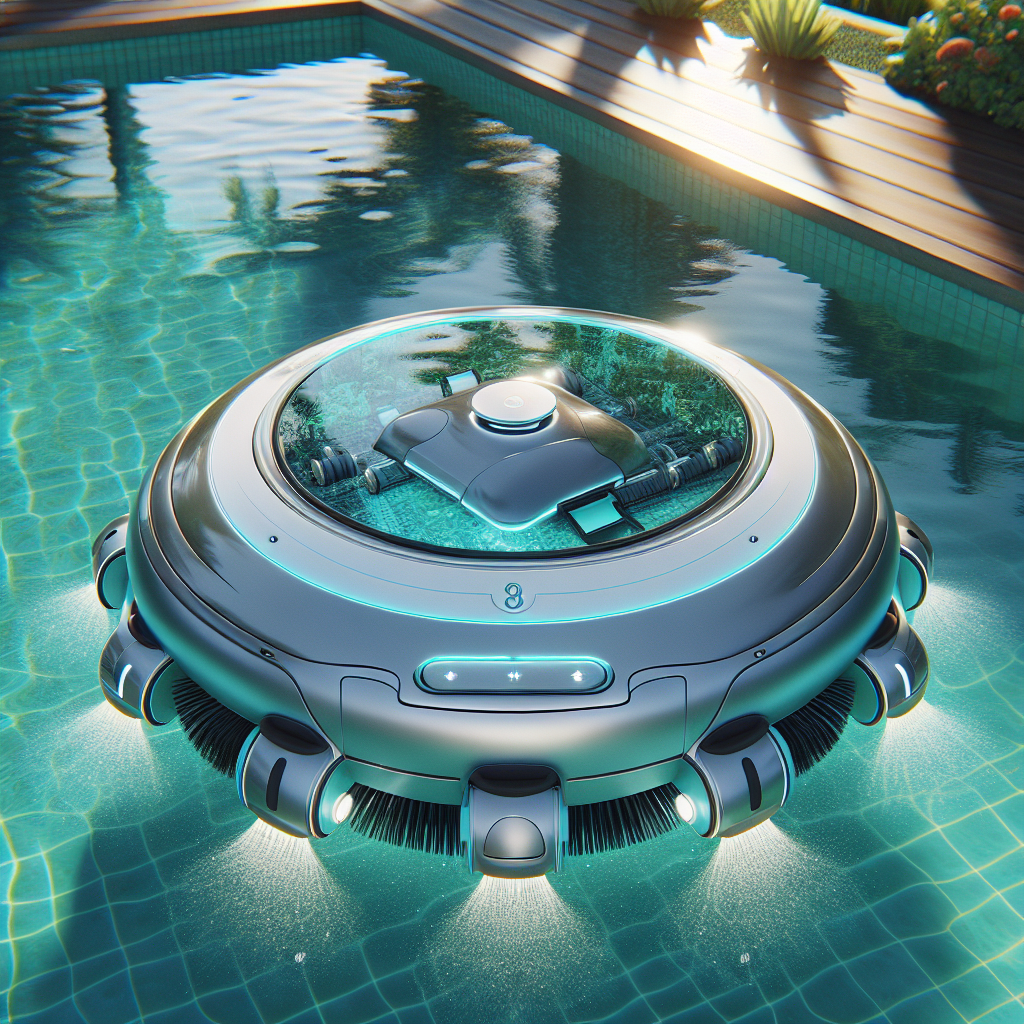
“Effortless Clean, Endless Swim: Revolutionize Your Pool Experience with Robotic Precision.”
Table of Contents
Introduction
Robotic pool cleaners are automated devices designed to maintain and clean swimming pools with minimal human intervention. They operate independently of the pool’s filtration system, using their own power source and filtration mechanism. These robots are equipped with motors, pumps, and filters to vacuum and scrub the pool’s floor, walls, and sometimes even the waterline, removing debris, dirt, and algae. Advanced models come with smart technology, allowing for programmable schedules, remote control operation, and navigation systems to ensure thorough and efficient cleaning coverage. Robotic pool cleaners offer a convenient, energy-efficient, and effective solution for pool maintenance, making them a popular choice among pool owners.
The Evolution of Robotic Pool Cleaners: A Technological Journey
The Evolution of Robotic Pool Cleaners: A Technological Journey
The advent of robotic pool cleaners marked a significant milestone in the realm of pool maintenance, transforming it from a labor-intensive task into a seamless, automated process. This technological journey, which began several decades ago, has seen continuous advancements, making these devices more efficient, user-friendly, and integral to modern pool care. The evolution of robotic pool cleaners is not just a tale of technological innovation but also a reflection of changing consumer needs and environmental consciousness.
Initially, pool cleaning was predominantly manual, requiring physical effort and time. The introduction of automatic pool cleaners in the mid-20th century was the first step towards revolutionizing pool maintenance. These early models, however, were limited by their dependency on the pool’s filtration system and often lacked the sophistication to provide a thorough clean. It was the emergence of robotic pool cleaners that truly redefined the landscape, offering a standalone solution that operated independently of the pool’s filtration system.
Robotic pool cleaners, in their nascent stages, were simple devices designed to traverse the pool floor and, to some extent, the walls, removing debris and dirt. They were equipped with basic filtration systems and relied on pre-set patterns to navigate the pool. Despite their limitations, these early models represented a significant leap forward, introducing pool owners to the convenience of automated cleaning.
As technology advanced, so did the capabilities of robotic pool cleaners. The integration of microprocessors and sensors allowed for more sophisticated navigation and cleaning patterns. These intelligent systems enabled the cleaners to map the pool’s dimensions and shape, ensuring comprehensive coverage without unnecessary repetition or missed spots. Moreover, the incorporation of advanced filtration technologies improved the cleaners’ ability to capture finer particles, enhancing water clarity and hygiene.
The most recent iterations of robotic pool cleaners embody the pinnacle of this technological evolution. They are equipped with features that cater to the diverse needs and preferences of pool owners. For instance, programmable timers and remote control functionality allow for customized cleaning schedules and on-demand operation. Some models even offer smartphone connectivity, enabling users to control their pool cleaner from anywhere, further simplifying pool maintenance.
In addition to convenience and efficiency, modern robotic pool cleaners also reflect a growing emphasis on sustainability. Energy-efficient motors and eco-friendly filtration systems minimize electricity usage and reduce the need for pool chemicals, aligning with contemporary environmental concerns. This shift not only benefits the planet but also translates to cost savings for pool owners, highlighting the multifaceted advantages of these advanced devices.
The evolution of robotic pool cleaners from rudimentary automatic devices to sophisticated, intelligent machines is a testament to the power of innovation. It encapsulates a journey of technological progress driven by the desire to simplify and enhance the pool ownership experience. As we look to the future, it is clear that robotic pool cleaners will continue to evolve, shaped by emerging technologies and the ever-changing needs of consumers. This ongoing journey promises to bring even greater convenience, efficiency, and sustainability to pool maintenance, ensuring that these remarkable devices remain an indispensable part of modern pool care.
How to Choose the Right Robotic Pool Cleaner for Your Swimming Pool
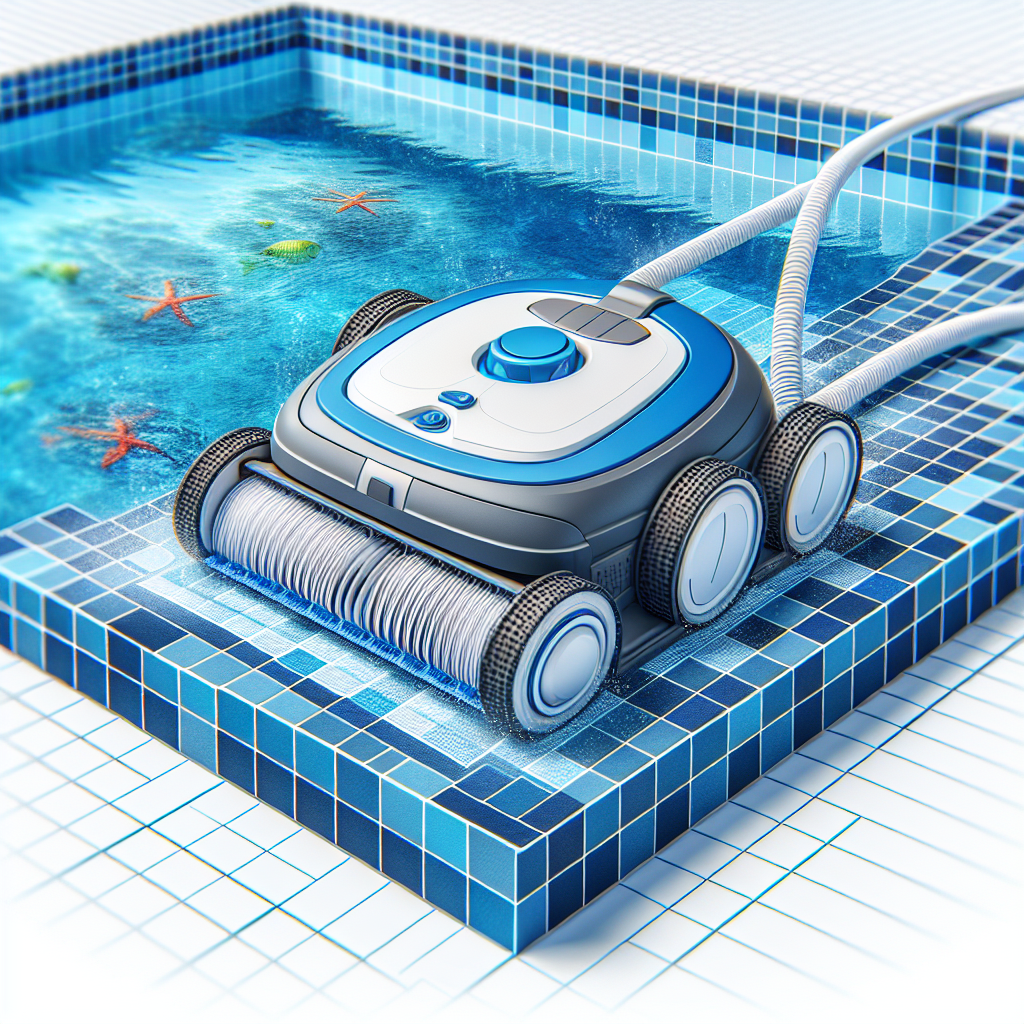
Choosing the right Robotic Pool Cleaner for your swimming pool is a decision that can significantly enhance your pool maintenance routine, ensuring your swimming pool remains a pristine oasis for relaxation and fun. With the advancement in technology, robotic pool cleaners have become an indispensable tool for pool owners, offering a hassle-free solution to keeping pools clean. However, with a myriad of options available in the market, selecting the perfect one can be a daunting task. This article aims to guide you through the process, ensuring you make an informed decision that suits your specific needs.
Firstly, it’s essential to consider the size and shape of your pool. Robotic pool cleaners are designed to efficiently navigate various pool configurations, but their effectiveness can vary depending on the dimensions and complexity of your pool’s design. For larger pools, you’ll need a cleaner with a robust motor and larger filter capacity to handle the increased volume of water and debris. Conversely, smaller pools might not require such powerful equipment, and opting for a more compact model could be more economical and just as effective.
The type of debris commonly found in your pool is another critical factor to consider. If your pool is surrounded by trees, you’re likely to encounter leaves, twigs, and other large debris. In this case, a robotic cleaner with a large, easy-to-clean filter basket would be ideal. For pools that primarily collect dust, sand, or smaller particles, a cleaner with fine filtration capabilities will be more appropriate. Understanding the predominant type of debris can help you choose a cleaner equipped to handle your pool’s specific cleaning needs.
Furthermore, the features and functionality of the Robotic Pool Cleaner play a significant role in the selection process. Modern cleaners come equipped with advanced technologies such as smart navigation, programmable timers, and remote control operation. Smart navigation systems allow the cleaner to map out the most efficient cleaning path, avoiding obstacles and ensuring complete coverage of the pool’s surface. Programmable timers offer the convenience of setting cleaning schedules, while remote control operation provides the flexibility to direct the cleaner to specific areas that may need extra attention. Depending on your preference for convenience and control, these features can significantly influence your choice.
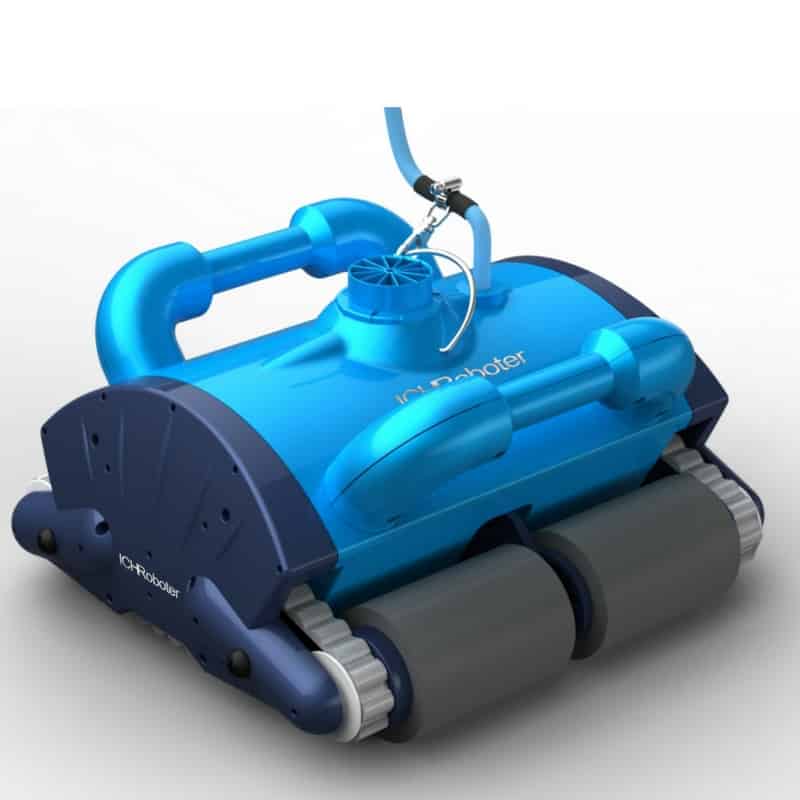
Durability and ease of maintenance are also important considerations. Robotic pool cleaners are an investment, and choosing a model known for its longevity and reliability can offer greater value in the long run. Look for cleaners made from high-quality materials and backed by a solid warranty. Additionally, consider how easy the cleaner is to maintain. Models that feature simple, tool-free access to filters and brushes will save you time and effort in upkeep, ensuring your cleaner remains in optimal condition for years to come.
Lastly, budget constraints cannot be overlooked. Robotic pool cleaners range in price from relatively affordable to quite expensive, depending on their features and capabilities. While it may be tempting to opt for a cheaper model, it’s crucial to balance cost with the quality and features you require. Investing in a slightly more expensive cleaner that meets all your needs can be more cost-effective over time than purchasing a basic model that falls short of expectations.
In conclusion, selecting the right Robotic Pool Cleaner for your swimming pool involves careful consideration of several factors, including the size and shape of your pool, the type of debris it collects, the cleaner’s features and functionality, its durability and ease of maintenance, and your budget. By taking the time to evaluate these aspects, you can choose a Robotic Pool Cleaner that offers the perfect blend of efficiency, convenience, and value, ensuring your pool remains a clean and inviting retreat.
The Benefits of Using a Robotic Pool Cleaner: Efficiency and Convenience
In the realm of pool maintenance, the advent of robotic pool cleaners has revolutionized the way homeowners and facility managers approach the task of keeping pools pristine. These innovative devices offer a plethora of benefits, chief among them being efficiency and convenience, which have made them an indispensable tool for anyone looking to maintain a clean and inviting pool with minimal effort.
Robotic pool cleaners, with their advanced technology, are designed to operate independently, navigating the floor, walls, and sometimes even the waterline of pools with precision. This autonomy is a significant leap forward from traditional manual cleaning methods, which are not only time-consuming but also physically demanding. The efficiency of robotic cleaners lies in their ability to cover every inch of the pool, ensuring no spot is left untouched. Equipped with powerful suction and scrubbing brushes, they can remove dirt, debris, algae, and bacteria, leaving the water crystal clear. This comprehensive cleaning capability means pool owners can enjoy a consistently clean environment without the need for frequent manual intervention.
Moreover, the convenience offered by robotic pool cleaners cannot be overstated. These devices are remarkably user-friendly, often requiring nothing more than the push of a button to commence their cleaning cycle. Many models come with programmable settings, allowing users to schedule cleaning sessions at their convenience, whether they are at home or away. This feature is particularly beneficial for those with busy lifestyles, as it ensures the pool remains in top condition without the need for constant supervision. Additionally, robotic cleaners are designed to be energy-efficient, operating independently of the pool’s filtration system. This not only reduces wear and tear on the pool’s equipment but also leads to significant savings on energy bills over time.
The environmental benefits of using a Robotic Pool Cleaner also deserve mention. By efficiently filtering and circulating water as they clean, these devices can significantly reduce the need for chemicals used in pool maintenance. This not only makes the pool safer and more pleasant to swim in but also lessens the environmental impact associated with chemical use. Furthermore, the ability of robotic cleaners to capture fine particles and debris helps maintain the balance of the pool’s ecosystem, promoting clearer and healthier water.
In conclusion, the benefits of using a Robotic Pool Cleaner are manifold. Their efficiency in thoroughly cleaning every part of the pool, coupled with the convenience of automated operation and scheduling, makes them an invaluable asset for any pool owner. The added advantages of energy savings, reduced chemical usage, and environmental friendliness only further underscore their appeal. As technology continues to advance, it is likely that robotic pool cleaners will become even more sophisticated, offering even greater benefits to users. For those seeking a hassle-free solution to pool maintenance, investing in a Robotic Pool Cleaner is undoubtedly a wise decision.
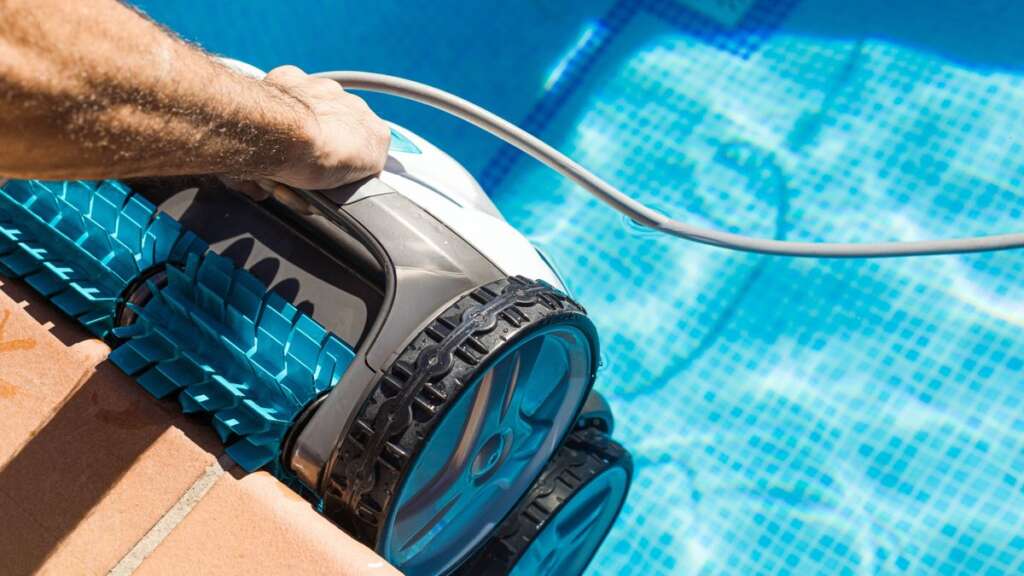
Maintenance Tips for Your Robotic Pool Cleaner: Ensuring Longevity
Robotic pool cleaners represent a significant advancement in pool maintenance technology, offering pool owners a convenient and efficient way to keep their pools clean. These sophisticated devices navigate the surfaces of pools, removing debris, dirt, and algae, thus ensuring a pristine swimming environment. However, to maintain their optimal performance and extend their lifespan, it is crucial to adhere to specific maintenance practices. This article delves into essential maintenance tips for your Robotic Pool Cleaner, ensuring its longevity and reliability.
Firstly, regular cleaning of the Robotic Pool Cleaner itself is paramount. After each use, it is advisable to remove and clean the filter bag or cartridge. This not only prevents the accumulation of debris, which can impair the cleaner’s efficiency, but also reduces the strain on its motor. Most models are equipped with easily removable filters, making this task straightforward. Rinsing the filters under running water is usually sufficient to remove the trapped debris. For more stubborn dirt, a soft brush may be used, taking care not to damage the filter material.
Secondly, inspecting the brushes and wheels for wear and tear is another critical maintenance step. These components are in constant contact with the pool’s surface and can wear down over time. Worn brushes or wheels may not only reduce the cleaner’s effectiveness but can also cause it to miss areas or become stuck. Most manufacturers offer replacement parts, and replacing these components when they show signs of wear will ensure that your Robotic Pool Cleaner continues to operate efficiently.
Furthermore, proper storage of the Robotic Pool Cleaner when not in use is essential for its longevity. Exposure to direct sunlight and extreme temperatures can degrade its materials, particularly the plastic parts, leading to premature aging. Therefore, it is recommended to store the cleaner in a cool, dry place, away from direct sunlight. If the cleaner is not going to be used for an extended period, such as during the winter months, it is advisable to remove the filters and fully dry the unit before storage. This prevents mold and mildew growth, which could damage the cleaner.
Additionally, monitoring the cleaner’s operation can preempt potential issues. While robotic pool cleaners are designed to operate independently, occasional supervision is beneficial. This allows you to identify any unusual patterns or behaviors, such as the cleaner getting stuck in a particular area of the pool or not covering the entire pool as it should. Early detection of such issues can prevent more significant problems down the line.
Lastly, adhering to the manufacturer’s guidelines is crucial. Each model of Robotic Pool Cleaner may have specific maintenance requirements, and familiarizing yourself with these can prevent inadvertent damage. The manufacturer’s manual typically includes detailed instructions on cleaning, storage, and troubleshooting. Following these guidelines not only ensures the proper care of your Robotic Pool Cleaner but also helps maintain its warranty.
In conclusion, maintaining a Robotic Pool Cleaner requires a combination of regular cleaning, inspection for wear and tear, proper storage, operational monitoring, and adherence to manufacturer’s guidelines. By following these maintenance tips, you can ensure the longevity and efficient performance of your Robotic Pool Cleaner, keeping your pool inviting and clean with minimal effort.
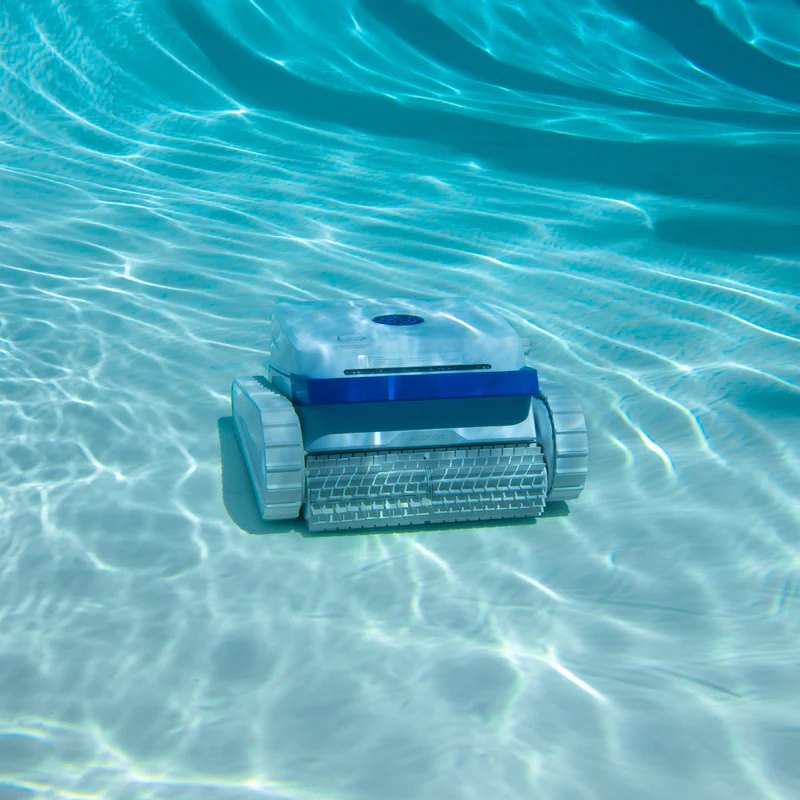
Comparing Robotic Pool Cleaners: Features and Performance
In the realm of pool maintenance, robotic pool cleaners have emerged as a game-changer, offering unparalleled convenience and efficiency. These autonomous devices navigate the floors, walls, and sometimes even the waterline of pools, removing debris and ensuring the water remains crystal clear. However, with a plethora of models available in the market, selecting the right Robotic Pool Cleaner can be a daunting task. This article aims to compare various robotic pool cleaners in terms of their features and performance, providing valuable insights to help you make an informed decision.
Firstly, one of the primary considerations when comparing robotic pool cleaners is their cleaning capabilities. Most models are designed to tackle dirt, leaves, and other common types of debris found in pools. However, their effectiveness can vary significantly. Some cleaners are equipped with advanced brushing systems that can remove stubborn algae and bacteria from pool surfaces, ensuring a thorough clean. The performance of these systems often depends on the type of brushes used—some models feature combination or all-purpose brushes that are effective on multiple surfaces, while others may have specialized brushes for tile or vinyl.
Another critical aspect to consider is the navigation and coverage of the cleaner. The best robotic pool cleaners are equipped with smart navigation systems that allow them to map out the most efficient cleaning path, ensuring complete coverage of the pool without missing spots. These systems also enable the cleaners to avoid obstacles and climb walls effectively, making them suitable for pools of various shapes and sizes. The efficiency of the navigation system plays a significant role in the overall performance of the cleaner, as it directly impacts the time taken to clean the pool and the energy consumed during the process.
Energy efficiency is yet another factor that differentiates robotic pool cleaners. With growing environmental concerns and rising energy costs, selecting a model that consumes less power without compromising on performance is crucial. Some of the latest models come with energy-saving features such as low-voltage motors and programmable timers that allow users to schedule cleaning sessions during off-peak hours, further reducing energy consumption.
Moreover, ease of use and maintenance are essential features that influence the user experience. Robotic pool cleaners that are easy to set up, operate, and maintain tend to be more popular among users. Features such as large and easy-to-clean filter baskets, swivel cables to prevent tangling, and indicators for filter fullness significantly enhance convenience. Additionally, models that come with remote control or app connectivity offer users greater control over the cleaning process, allowing for customized cleaning cycles and real-time monitoring.
In conclusion, when comparing robotic pool cleaners, it is important to consider a range of features and performance metrics. From cleaning capabilities and navigation efficiency to energy consumption and user convenience, each aspect plays a crucial role in determining the suitability of a cleaner for your pool. By carefully evaluating these factors, you can select a Robotic Pool Cleaner that not only meets your specific needs but also provides a hassle-free and efficient cleaning solution.
The Future of Pool Cleaning: Innovations in Robotic Pool Cleaner Technology
The Future of Pool Cleaning: Innovations in Robotic Pool Cleaner Technology
In the realm of home maintenance, the evolution of technology has brought about significant advancements, particularly in the way we approach the task of keeping our swimming pools clean and hygienic. The advent of robotic pool cleaners has revolutionized pool maintenance, offering a glimpse into a future where the chore of pool cleaning is not only effortless but also more efficient. This article delves into the innovative strides being made in Robotic Pool Cleaner technology, highlighting how these developments are set to redefine the standards of pool cleanliness and maintenance.
Robotic pool cleaners, autonomous devices designed to collect debris and sediment from swimming pools without human intervention, have come a long way since their inception. Initially, these machines were simple in design and functionality, capable of performing basic cleaning tasks. However, as technology has advanced, so too have these robotic assistants, evolving into sophisticated devices equipped with cutting-edge features that promise to elevate the pool cleaning experience to new heights.
One of the most notable innovations in this field is the integration of artificial intelligence (AI) and machine learning algorithms. These technologies enable robotic pool cleaners to navigate the pool’s surface and walls more intelligently, ensuring thorough coverage and efficient cleaning. By learning the layout of the pool and adapting their cleaning patterns over time, these robots can identify areas that require more attention, thereby optimizing their cleaning routines for maximum effectiveness.
Furthermore, the incorporation of advanced filtration systems in modern robotic pool cleaners represents another leap forward. These systems are capable of capturing finer particles than ever before, significantly improving water clarity and quality. By removing even the smallest of debris, these robotic cleaners not only enhance the aesthetic appeal of the pool but also contribute to a healthier swimming environment by reducing the potential for bacterial growth.
Connectivity and smart technology integration have also played a pivotal role in the evolution of robotic pool cleaners. Many of today’s models can be controlled and monitored via smartphone apps, allowing users to customize cleaning schedules, track progress, and receive maintenance alerts from anywhere. This level of convenience and control is indicative of a broader trend towards smart home integration, where various household tasks are seamlessly managed through digital platforms.
Looking ahead, the future of Robotic Pool Cleaner technology appears promising, with several emerging trends poised to further transform pool maintenance. For instance, the development of eco-friendly models that consume less energy and operate more quietly is gaining momentum, reflecting a growing emphasis on sustainability and environmental responsibility. Additionally, research into more durable materials and designs promises to extend the lifespan of these devices, making them a more cost-effective solution in the long run.
In conclusion, the innovations in Robotic Pool Cleaner technology are not only making pool maintenance easier but also more effective and environmentally friendly. As these devices become smarter, more connected, and more efficient, they offer a glimpse into a future where keeping a pool clean is no longer a time-consuming chore but a seamless aspect of home management. With continued advancements on the horizon, it is clear that the role of robotic pool cleaners in our homes is set to become increasingly significant, heralding a new era in pool cleaning that is characterized by convenience, efficiency, and sustainability.
Q&A
1. **What is a Robotic Pool Cleaner?**
A Robotic Pool Cleaner is an automated device designed to clean swimming pools with minimal human intervention, using suction and brushes to remove debris and dirt from the pool’s floor and walls.
2. **How does a Robotic Pool Cleaner work?**
A Robotic Pool Cleaner operates independently of the pool’s filtration system. It uses an electric motor to create suction and drive brushes or rollers, collecting debris into an onboard filter or bag. It moves around the pool using wheels or tracks, guided by sensors or pre-programmed patterns.
3. **What are the benefits of using a Robotic Pool Cleaner?**
Benefits include reduced manual cleaning effort, improved pool cleanliness due to consistent and thorough cleaning patterns, energy efficiency compared to traditional pool filtration systems, and the ability to operate at scheduled times for convenience.
4. **Can robotic pool cleaners climb walls?**
Yes, many advanced robotic pool cleaners are designed to climb walls and even clean the waterline, thanks to their powerful motors and grip-enhanced tracks or wheels.
5. **How often should a Robotic Pool Cleaner be used?**
The frequency depends on various factors such as pool usage, location, and the amount of debris typically found in the pool. For maintenance, running the cleaner 2-3 times a week is common, but it may be used more frequently if the pool is heavily used or located in an area with lots of trees and bushes.
6. **Are robotic pool cleaners suitable for all pool types?**
Robotic pool cleaners are versatile and can be used in most pool types, including in-ground and above-ground pools made of concrete, fiberglass, or vinyl. However, it’s important to choose a model compatible with the specific size, shape, and surface of your pool for optimal cleaning performance.Robotic pool cleaners are highly efficient, autonomous devices designed to clean pools with minimal human intervention. They are equipped with advanced technology that allows them to navigate and clean various pool shapes and sizes effectively.
These cleaners can scrub, vacuum, and filter pool water, removing debris, dirt, and algae, thus ensuring a cleaner and healthier swimming environment. They are energy-efficient, cost-effective in the long run, and reduce the need for chemical-based cleaning, making them an environmentally friendly option. Overall, robotic pool cleaners offer a convenient, efficient, and eco-friendly solution for pool maintenance.

